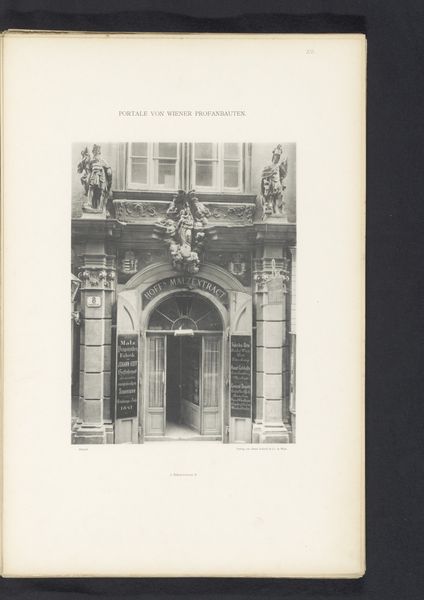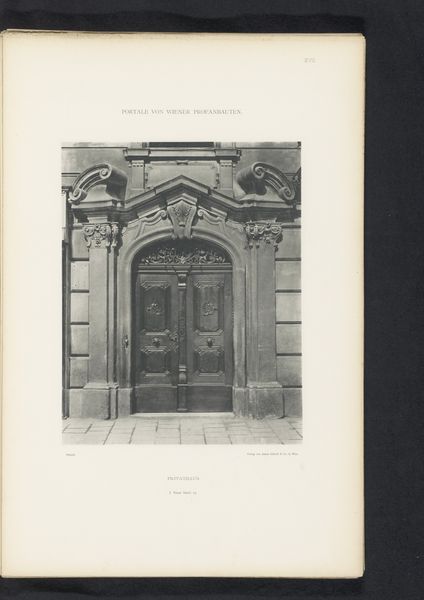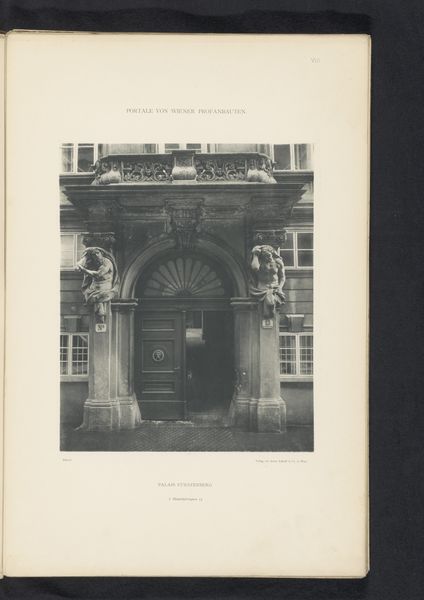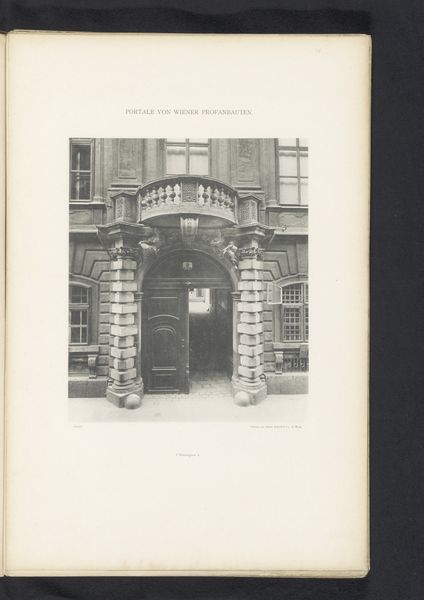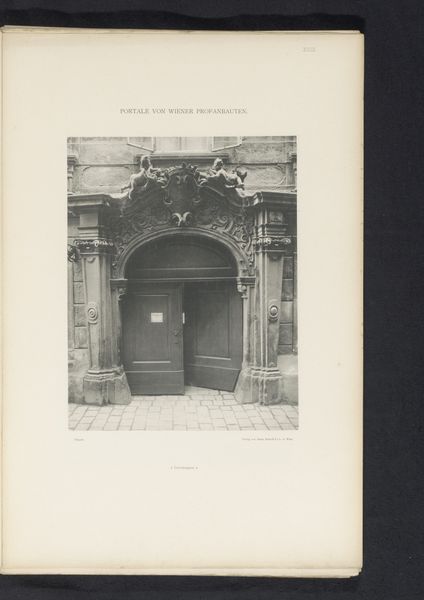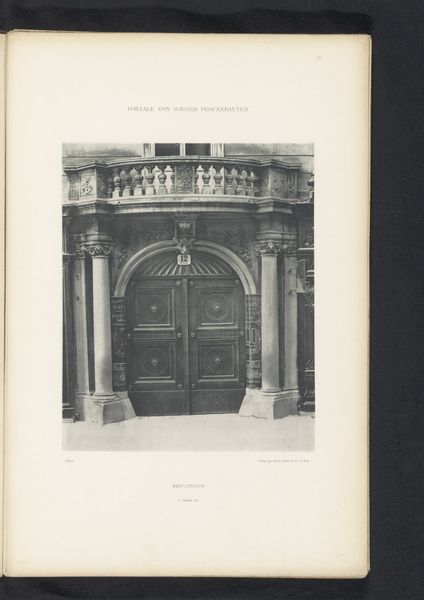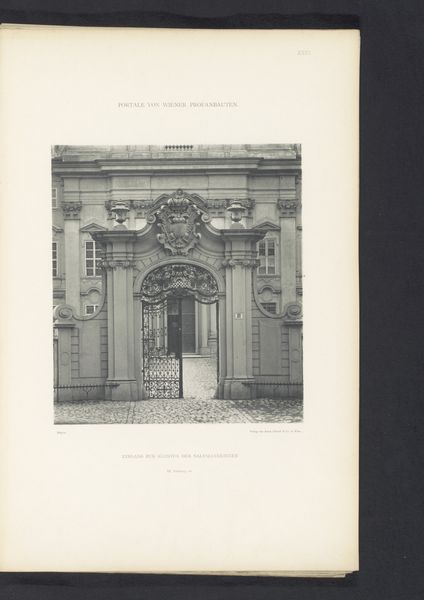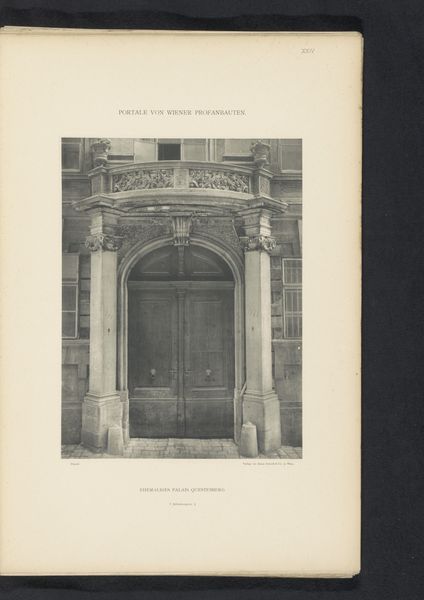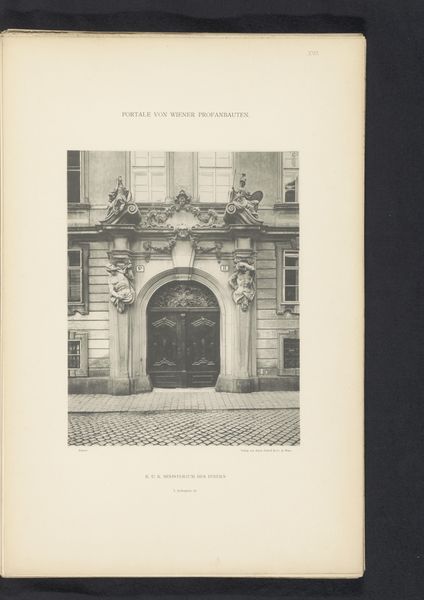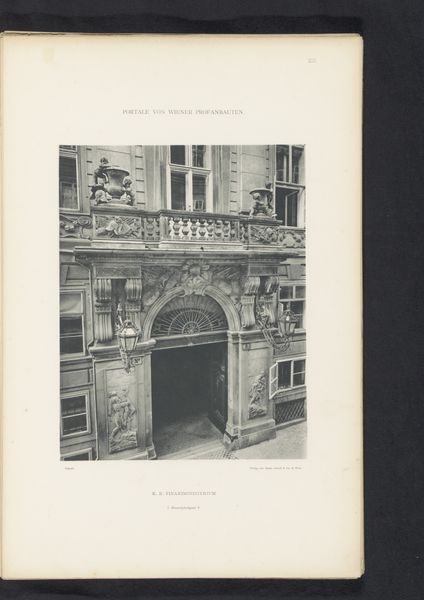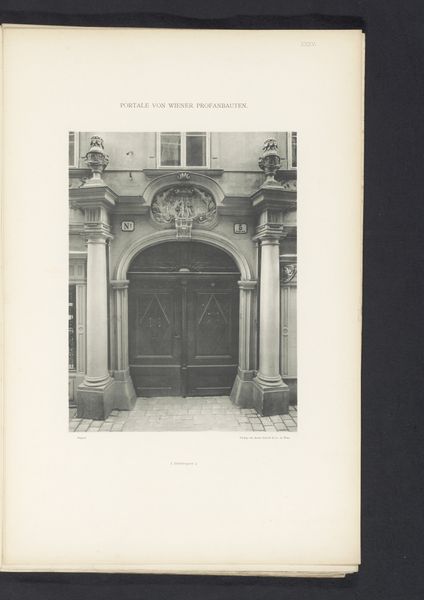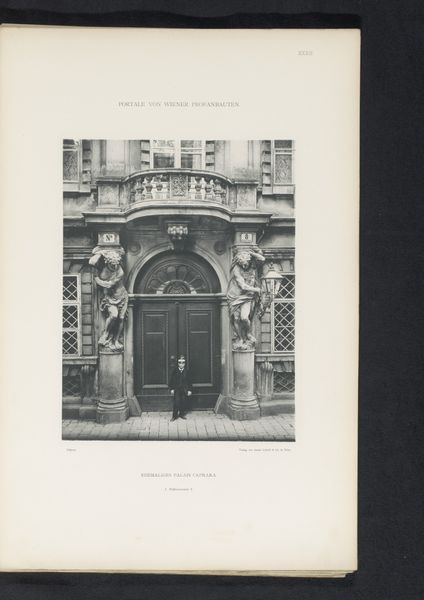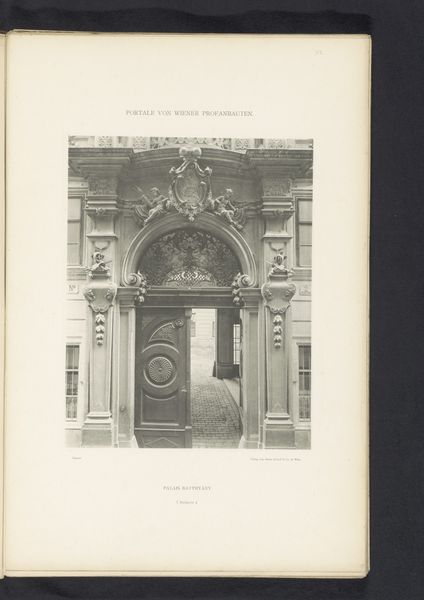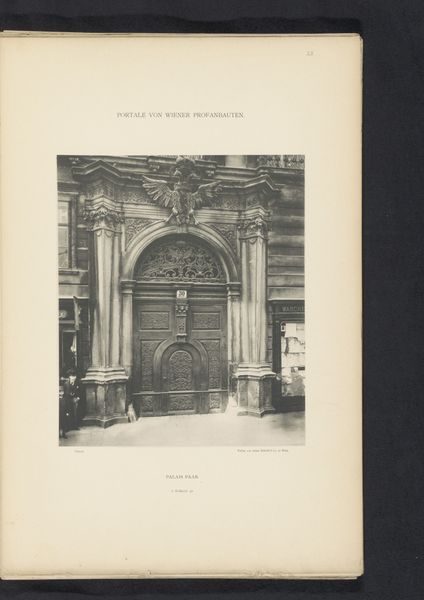
print, photography, architecture
# print
#
photography
#
cityscape
#
architecture
#
building
Dimensions: height 263 mm, width 208 mm
Copyright: Rijks Museum: Open Domain
Curator: This image is a print of a photograph, dating from before 1894. It's titled "Toegangsportaal van Palais Trautson te Wenen," depicting the entrance portal of the Palais Trautson in Vienna. Editor: My immediate impression is one of guarded grandeur. The imposing facade and statuary contrast starkly with the lone figure standing in the entryway; the scale seems intentionally alienating, indicative of institutional power. Curator: Indeed. Note the meticulously crafted columns and the elaborate relief carvings above the doorway. The Palais Trautson served many purposes throughout history, including housing the Austro-Hungarian Noble Guard. Analyzing its construction offers a lens into the craftsmanship and economic structures of the late 19th century; where the materials were sourced and what sort of laborers built it, tells the tale of the time. Editor: Right, and beyond material origins, we can also explore the image itself. It's fascinating how the photograph situates an individual within the overwhelming structure, potentially highlighting class dynamics. A critical question to ask here: what narrative does the composition construct about the people permitted and, more importantly, not permitted to pass through such portals? The figure almost appears as a gatekeeper. Curator: I am particularly interested in the printmaking process itself. Understanding how this photograph was reproduced allows us to see the transformation of a visual document through the technologies of mass production, bringing questions of ownership and reproducibility to the forefront. Editor: Yes, it leads one to consider its distribution at that time, too. Beyond architecture and craftsmanship, these types of images were used as documentation and forms of representation, reflecting cultural attitudes and systems of power, where images and prints such as these reinforced the existing societal hierarchies. Curator: Studying this image has given me renewed appreciation for the intricate network of artisans, the printers and the manufacturers, all collaborating behind the scenes to facilitate the cultural dissemination of an image. Editor: Reflecting on the symbolism, composition, and material and political contexts really amplifies the emotional impact of that singular figure beneath the towering portal—I'm grateful for this reminder to interrogate the structures around us.
Comments
No comments
Be the first to comment and join the conversation on the ultimate creative platform.
